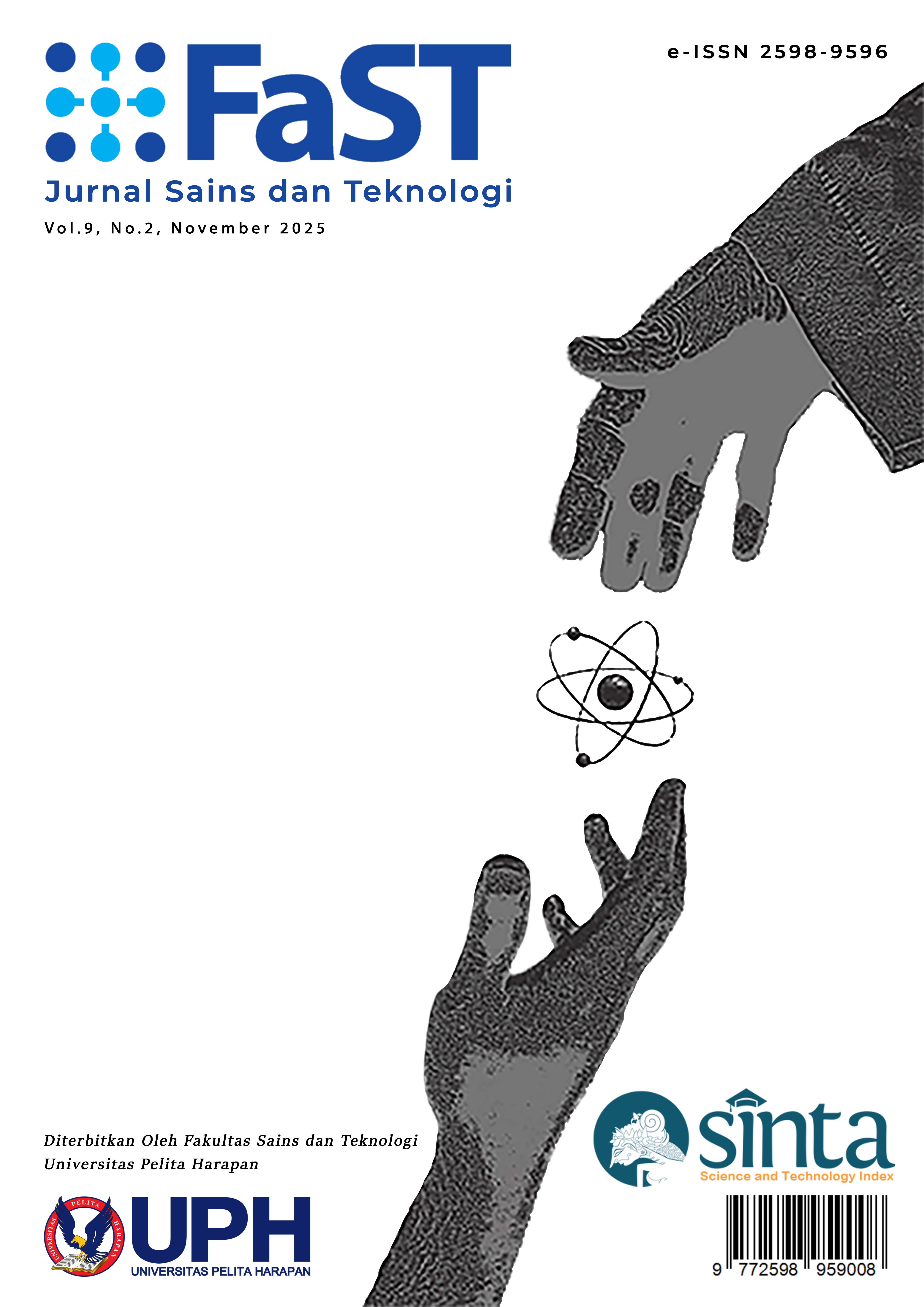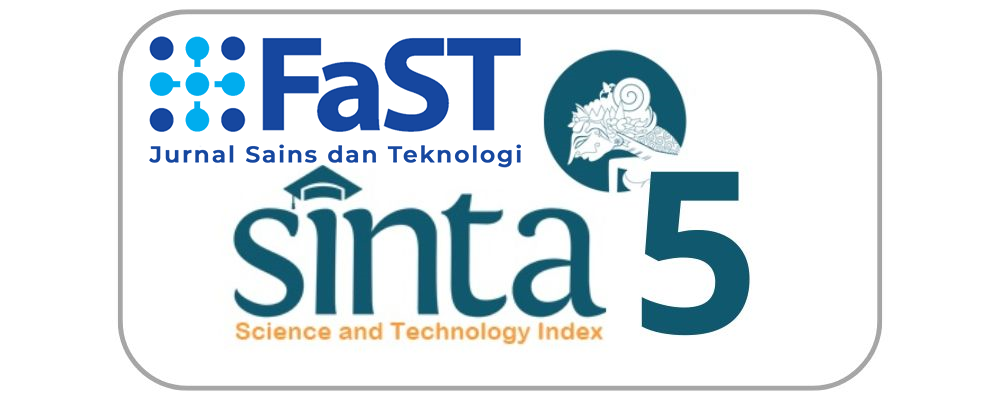DMAIC Based Approach for Analyzing and Controllling Defective Product in Rubber Clutch Damper Product
[DMAIC Based Approach for Analyzing and Controllling Defective Product in Rubber Clutch Damper Product]
DOI:
https://doi.org/10.19166/jstfast.v9i2.10393Keywords:
DMAIC, DPMO, QualityAbstract
Rejects represent a major quality issue in the production process. If not effectively mitigated, they can increase production costs, disrupt process flow, and reduce customer satisfaction. This study aimed to minimize product rejection in rubber clutch damper manufacturing by applying the Six Sigma DMAIC (Define, Measure, Analyze, Improve, Control) methodology. In the Define phase, Critical to Quality (CTQ) characteristics were identified to determine key improvement priorities. The Measure phase involved data collection to calculate Defects per Million Opportunities (DPMO), sigma level, and the construction of a Pareto chart to highlight the dominant sources of defects. Subsequently, the Analyze phase employed Failure Mode and Effects Analysis (FMEA) to evaluate the Severity, Occurrence, and Detection of potential failures, leading to the determination of the Risk Priority Number (RPN) as a basis for improvement prioritization. In the Improve phase, corrective actions targeting the highest RPN factors were implemented, followed by the Control phase, which established sustainability through One Point Lessons and Standard Operating Procedures (SOPs). The implementation of the DMAIC framework resulted in a substantial improvement in process capability, indicated by an increase in sigma level from 4.11 to 4.58, and a reduction in the total production rejection rate from 1.51% to 0.31%. A paired t-test confirmed a statistically significant difference between pre- and post-improvement rejection rates (t = 61.63, p < 0.0001), leading to the rejection of the null hypothesis. These findings demonstrate that the applied improvements effectively reduced product defects and achieved a total rejection rate below the company’s management target of 0.40%. The study confirms the effectiveness of the DMAIC approach in enhancing product quality and operational efficiency within rubber component manufacturing.
Bahasa Indonesia Abstract: Permasalahan reject merupakan salah satu isu krusial dalam proses produksi yang apabila tidak segera ditangani, dapat berdampak pada peningkatan biaya produksi, keterlambatan pengiriman antarproses, serta penurunan tingkat kepuasan pelanggan. Penelitian ini bertujuan untuk menurunkan tingkat reject pada produk rubber clutch damper melalui penerapan metodologi Six Sigma dengan pendekatan DMAIC (Define, Measure, Analyze, Improve, Control). Pada tahap Define, dilakukan identifikasi Critical to Quality (CTQ) untuk menentukan karakteristik yang berpengaruh signifikan terhadap kualitas produk. Tahap Measure meliputi pengumpulan data produksi guna menghitung nilai Defects Per Million Opportunities (DPMO), tingkat sigma, serta penyusunan diagram Pareto untuk mengidentifikasi jenis cacat dengan kontribusi terbesar terhadap total reject. Selanjutnya, tahap Analyze dilaksanakan menggunakan metode Failure Mode and Effects Analysis (FMEA) dengan penilaian terhadap parameter Severity, Occurrence, dan Detection, yang dikalikan untuk memperoleh nilai Risk Priority Number (RPN) sebagai dasar prioritas tindakan perbaikan. Tahap Improve difokuskan pada penerapan solusi korektif terhadap faktor penyebab dengan nilai RPN tertinggi, sedangkan tahap Control menitikberatkan pada keberlanjutan hasil perbaikan melalui penyusunan One Point Lessons (OPL) dan Standard Operating Procedures (SOP). Penerapan metodologi DMAIC menghasilkan peningkatan kapabilitas proses dengan kenaikan nilai sigma dari 4,11 menjadi 4,58, serta penurunan rejection rate total produksi dari 1,51% menjadi 0,31%. Hasil uji paired t-test menunjukkan perbedaan yang signifikan antara tingkat rejection rate sebelum dan sesudah perbaikan (t = 61,63; p < 0,0001), sehingga hipotesis nol ditolak. Dengan demikian, penerapan DMAIC terbukti efektif dalam menurunkan tingkat reject secara signifikan hingga di bawah target manajemen sebesar 0,40%, sekaligus meningkatkan kualitas produk dan efisiensi proses produksi.
References
Afifa, E. P. V., & Damayanti, R. W. (2023). Six Sigma implementation on wash motor twin tub washing machine: A case study. E3S Web of Conferences, 465, 2045. https://doi.org/10.1051/e3sconf/202346502045
Dewi, S. K., & Ummah, D. M. (2019). Perbaikan kualitas pada produk genteng dengan metode Six Sigma. JTI UNDIP Jurnal Teknik Industri, 14(2), 87–92. https://doi.org/10.14710/jati.14.2.87-92
Fitriana, F., Azizah, F. N., & Hamdi, M. (2023). Analisis Statistical Quality Control dalam proses produksi komponen wheel rim. Go-Integratif: Jurnal Teknik Sistem dan Industri, 4(1), 11–18. https://doi.org/10.35261/gijtsi.v4i01.8778
Huda, K. N., Kusuma, R. A., Ghani, F. A., Jaya, R., & Purwaningrum, T. (2025). Perusahaan pembuat spare part motor Mantri Karbu: Mengoptimalkan proses produksi dengan metode transformasi. Jurnal Manuhara: Pusat Penelitian Ilmu Manajemen dan Bisnis, 3(2), 46–54. https://doi.org/10.61132/manuhara.v3i2.1595
Imansuri, F., Chayatunnufus, T., Safril, S., Sumasto, F., Purwojatmiko, B. H., & Salati, D. (2024). Reducing defects using DMAIC methodology in an automotive industry. Spektrum Industri, 22(1), 1–10. https://doi.org/10.12928/si.v22i1.171
Lima, A. K. S. R., Becerra, C. E. T., Feitosa, A. D., Albuquerque, A. P. G. de, Melo, F. J. C. de, & Medeiros, D. D. de. (2025). Effective practices for implementing quality control circles aligned with ISO quality standards: Insights from employees and managers in the food industry. Standards, 5(1), 6. https://doi.org/10.3390/standards5010006
Mittal, A., Gupta, P. K., Kumar, V., Owad, A. A., Mahlawat, S., & Singh, S. (2023). The performance improvement analysis using Six Sigma DMAIC methodology: A case study on Indian manufacturing company. Heliyon, 9(3), e14625. https://doi.org/10.1016/j.heliyon.2023.e14625
Nurcahyo, R., Apdillah, R., & Yadrifil. (2017). Application of Lean Six Sigma and theory of inventive problem solving to reduce waste and improve the quality of motorcycle rear arm. Journal of Asian Scientific Research, 7(5), 176–186. https://doi.org/10.18488/journal.2.2017.75.176.186
Sampaio‐Neto, R., Souza, C. G. P., Brito, L., & Guimarães, G. L. N. (2024). Challenges in cost reduction for automotive parts: A comprehensive analysis. SAE Technical Papers on CD-ROM/SAE Technical Paper Series, 1. https://doi.org/10.4271/2024-36-0174
Setiawan, I., & Setiawan, S. (2020). Defect reduction of roof panel part in the export delivery process using the DMAIC method: A case study. Jurnal Sistem dan Manajemen Industri, 4(2), 108–115. https://doi.org/10.30656/jsmi.v4i2.2775
Suwikromo, R. M., Soegoto, A. S., & Ogi, I. W. J. (2022). Analisis kualitas produk harga dan kualitas pelayanan terhadap kepuasan pelanggan di PT. Air Manado. Deleted Journal, 10(3), 410–418. https://doi.org/10.35794/emba.v10i3.42278
Trimarjoko, A., Saroso, D. S., Purba, H. H., Hasibuan, S., Jaqin, C., & Aisyah, S. (2019). Integration of nominal group technique, Shainin system and DMAIC methods to reduce defective products: A case study of tire manufacturing industry in Indonesia. Management Science Letters, 9(7), 2421–2430. https://doi.org/10.5267/j.msl.2019.7.013
Downloads
Published
Issue
Section
License
Copyright (c) 2025 christopher nata, Tegar Tandika, Priskila Christine

This work is licensed under a Creative Commons Attribution-ShareAlike 4.0 International License.
“Authors who publish with this journal agree to the following terms:
1) Authors retain copyright and grant the journal right of first publication with the work simultaneously licensed under a Creative Commons Attribution License (CC-BY-SA 4.0) that allows others to share the work with an acknowledgement of the work's authorship and initial publication in this journal.
2) Authors are able to enter into separate, additional contractual arrangements for the non-exclusive distribution of the journal's published version of the work (e.g., post it to an institutional repository or publish it in a book), with an acknowledgement of its initial publication in this journal.
3) Authors are permitted and encouraged to post their work online (e.g., in institutional repositories or on their website). The final published PDF should be used and bibliographic details that credit the publication in this journal should be included.”



